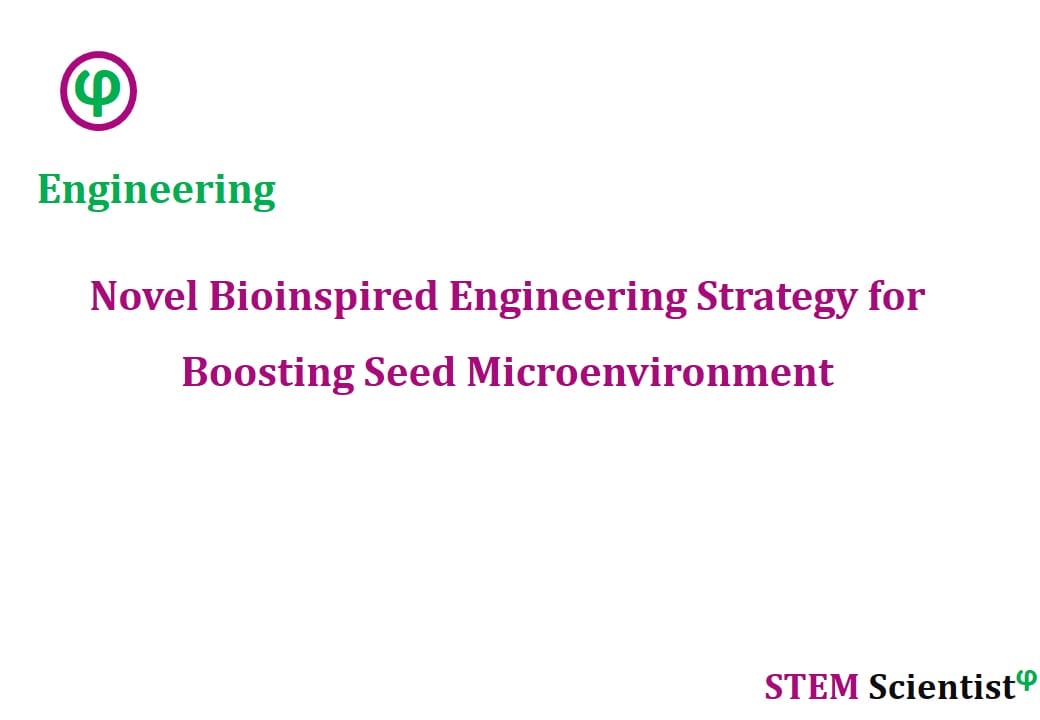
The following study was conducted by Scientists from Department of Civil and Environmental Engineering, Massachusetts Institute of Technology, Cambridge, USA. Study is published in Proceedings of the National Academy of Sciences Journal as detailed below.
Proceedings of the National Academy of Sciences; 116(51): 25555-25561
A Bioinspired Approach to Engineer Seed Microenvironment to Boost Germination and Mitigate Soil Salinity
Significance
In a world that strives to accommodate population growth and climate pattern changes, there is a compelling need to develop new technologies to enhance agricultural output while minimizing inputs and mitigating their effects on the environment. In this study, we describe a biomaterial-based approach to engineer the microenvironment of seeds through the preservation and delivery of plant growth promoting rhizobacteria (PGPRs) that are able to fix nitrogen and mitigate soil salinity. PGPRs are encapsulated in silk–trehalose (ST) coatings that achieve bacterial preservation and delivery upon sowing. The biomaterial choice is inspired by a recent finding that a combination of proteins and disaccharides is key for anhydrobiosis. This simple technology is effective to boost seed germination and mitigate soil salinity.
Abstract
Human population growth, soil degradation, and agrochemical misuse are significant challenges that agriculture must face in the upcoming decades as it pertains to global food production. Seed enhancement technologies will play a pivotal role in supporting food security by enabling germination of seeds in degraded environments, reducing seed germination time, and boosting crop yields. So far, a great effort has been pursued in designing plants that can adapt to different environments and germinate in the presence of abiotic stressors, such as soil salinity, heat, and drought. The technology proposed here seeks a different goal: To engineer the microenvironment of seeds by encapsulation, preservation, and precise delivery of biofertilizers that can boost seed germination and mitigate abiotic stressors. In particular, we developed a biomaterial based on silk fibroin (S) and trehalose that can be mixed with rhizobacteria and applied on the surface of seeds, retrofitting currently used techniques for seed coating, i.e., dip coating or spray drying. A micrometer thick transparent robust coating is formed by material assembly. The combination of a polymorphic protein as S and of a disaccharide used by living systems to tolerate abiotic stressors provides a beneficial environment for the survival of nonspore forming rhizobacteria outside the soil and in anhydrous conditions. Using Rhizobium tropici CIAT 899 and Phaseolus vulgaris as working models, we demonstrated that rhizobacteria delivered in the soil after coating dissolution infect seedlings’ roots, form root nodules, enhance yield, boost germination, and mitigate soil salinity.
Source:
Proceedings of the National Academy of Sciences
URL: https://www.pnas.org/content/116/51/25555
Citation:
Zvinavashe, A. T., E. Lim, et al. (2019). “A bioinspired approach to engineer seed microenvironment to boost germination and mitigate soil salinity.” Proceedings of the National Academy of Sciences 116(51): 25555-25561.


